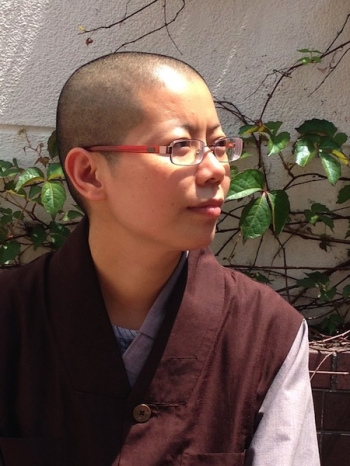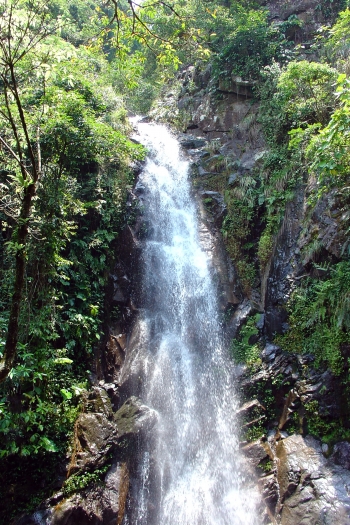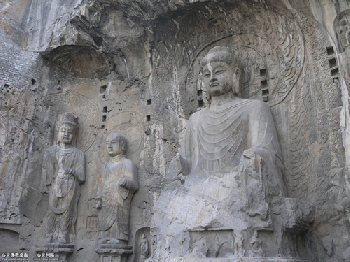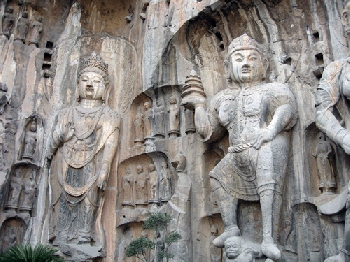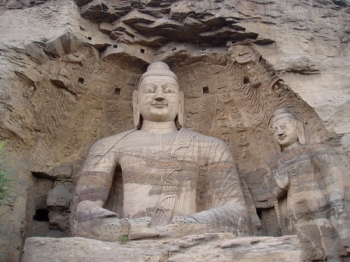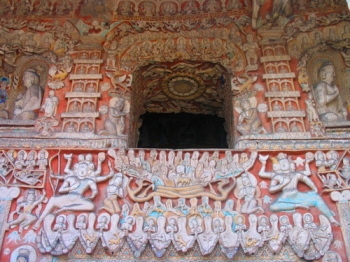Mountains are ever-present, natural temples. Images of nature have always been associated with Chinese Buddhism throughout history. For example, having been blocked by the storm, the disciple Tao Kui was unable to climb the mountain and visit the monks, which implied a distinction between the mundane and sacred worlds. When the monks Seng Yu and Seng Qing burned their bodies, the weather changed dramatically. The parasol tree grew where Hui Shao ignited his body. When Hui Shao, Seng Yu, Hui Yi, Seng Qing and Tan Hong self-immolated, phenomena like stars, smoke, pipes and incense, the dragon and the deer appeared in their provinces.
Buddha-nature originally referred to the nature and character of the Buddha, and is usually used to refer to the possibility of becoming a Buddha. The ultimate goal of Buddhism is to cut away suffering; therefore, Buddha-nature is a core doctrine in Buddhism. In Indian Buddhism, the metaphysics of Buddha-nature emerged as a certain “substratum” of unrealized potential in each being. When Buddhism entered China, because of the needs of Buddhism during the Wei and Jin Dynasties, Zhu Daosheng’s idea that “all beings have Buddha-nature” (circa 360 – 434) became popular. Landscape poetry in the Six Dynasties period was literature directly influenced by Dao Sheng's theory of Buddha-nature. It is generally recognized that natural landscapes became an aesthetic object from the Southern Song Dynasty onwards, which is called Zhuang and Lao Out and landscape emerging. Scholars in the Wei and Jin Dynasties regarded nature as bridge between the embodiment of metaphysical thoughts and experience of delight. From their point of view, nature is the Transformation Body of Buddha, which means truth can be realized in the observation of nature, allowing the spirit to move within heaven and earth freely (1).
Enjoying landscapes was characteristic of the “nature consciousness” idealized by scholars in the Wei and Jin Dynasties. It was also closely related to that quintessentially Chinese idea of retreating into nature for security. Between “official” and “hidden”, the appreciation of natural beauty became their essential spiritual refuge. From the Jin Gu Party to the Lan Ting Gathering, scholars in the Wei and Jin Dynasties felt they were truly practicing when they were enjoying life. Natural beauty was liberated from the involvement of society and became the subject of aesthetics alone. Scholars were enjoying mountains and waters, so nature entered into landscape poetry as a central theme. This expansion of the natural aesthetic sense into pastoral-based poems, paintings, garden art, and culture laid the foundation for aesthetics' further intellectual development.
In ancient China, the weather was thought to have a relationship with human morality (2). This was called the “Communication between Heaven and Humanity”. This story was a product of Confucian cosmology, which on the one hand, proved the necessity Moral Cultivation in the Confucian biographies and, on the other hand, indicated the harmony between the Buddhist path and Chinese culture. The minds of faith and/or “good roots” of sentient beings penetrate Buddha and Bodhisattvas and cause them to respond. Thus, it is our mind in faith received by the Buddha, and his response to it. In Pure Land Buddhism, it refers to the awareness of Amitabha Buddha of the recitation of his name by sentient beings, and his response of saving them (3).
“The relation between people and the heavens” (Tianren guanxi) has been the most fundamental question of traditional Chinese philosophical research, and “the god-human harmony” was an essential concept of traditional Chinese philosophy. The “heavenly response to humans” was the product of concentrated reflection on the basic ideals of Chinese philosophy.
The Chinese parasol tree is a deciduous tree belonging to sterculiaceae, found all over China. With its straight trunk and luxuriant leaves, people treated it as a symbol of good luck and planted it everywhere, and it came to have rich cultural connotations. The Chinese parasol tree has many other names. Initially, it could be seen in The Book of Odes: “the phoenix chanted in the mountain, and the parasol appeared” (4). This was the earliest legend of the parasol tree attracting the phoenix. At the end of Xia and the beginning of Zhou, it had attracted people’s attention. It was also mentioned in later classics. The King of Wu in the spring and autumn period (770-477 BCE), Fu Chai, built a parasol garden and planted the parasol tree. As recorded in Record of Mystery (Shu yi ji) written by Ren Fang in the Liang Dynasty: “the parasol garden is in the Wu Palace and used to be an old garden of Fu Chai, with another name of Qin Chuan” (5).
